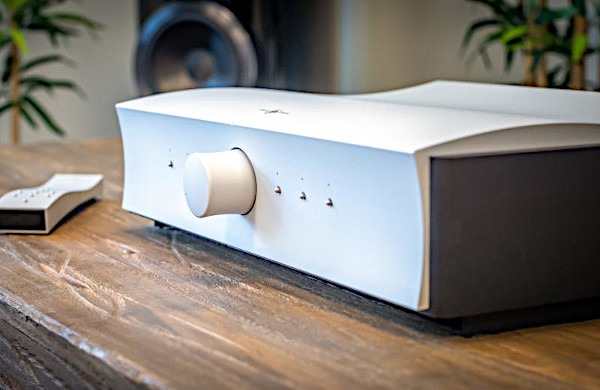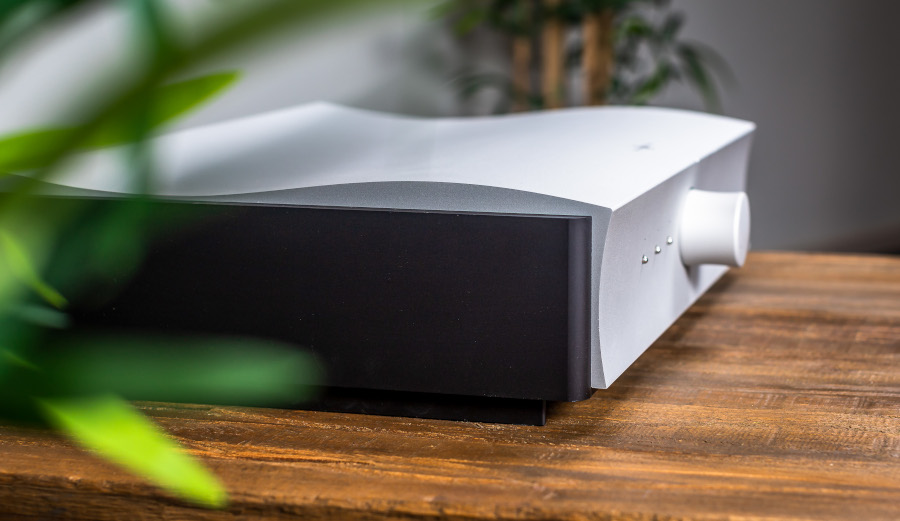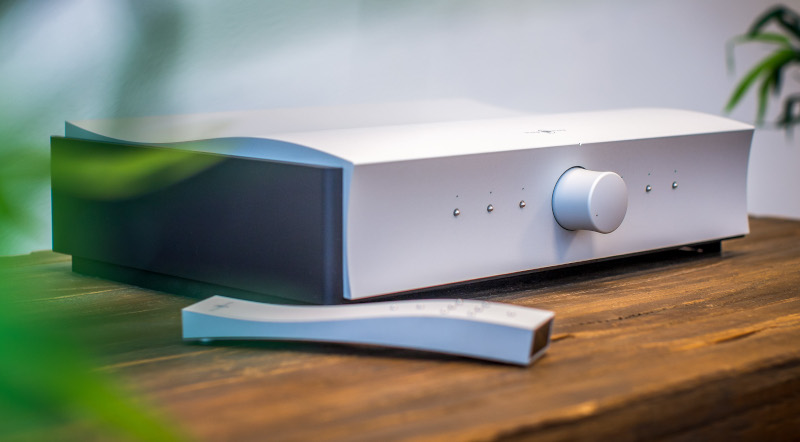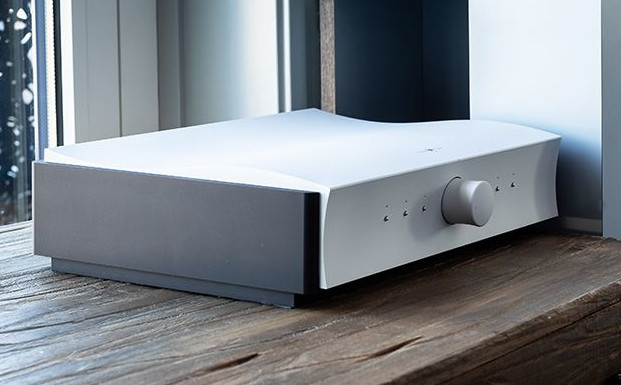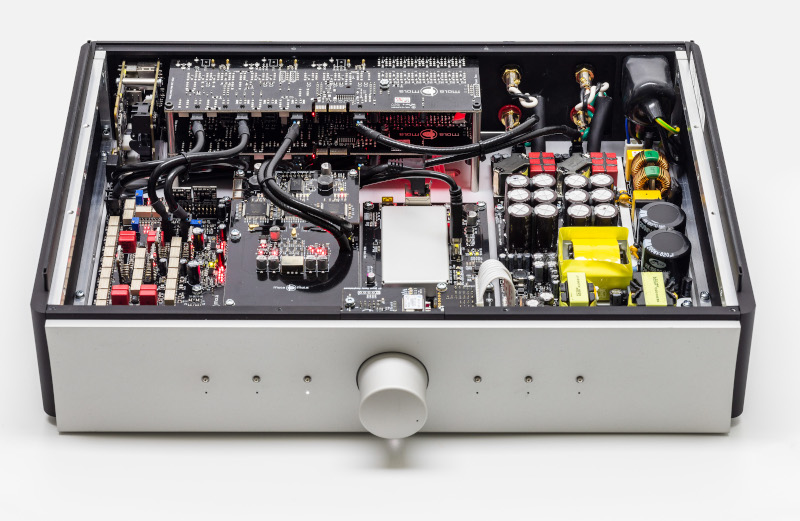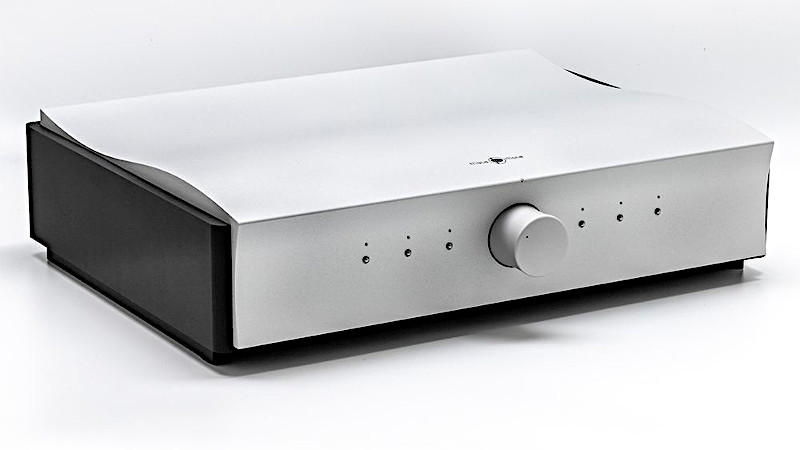MOLA MOLA Kula
Integrated amplifiers
The first impression - as well as all the other impressions - of this Mola Mola are those of absolute cleanliness of its sound. Mola Mola embraces the thought that once you remove everything that isn't the music, the music is what remains. The new integrated amplifier is the clear proof of it.
Function and form
The Kula is the latest addition in the Mola Mola line-up. As such, it uses technologies that were developed for Makua and Kaluga amplifiers, and for Tambaqui DAC.
As one expects, the NCore modules are in the heart of the Kula. The company claims that the parts in the Kula are not only adopted from the Mola Mola’s flagship models, but also optimized to fit the all-in-one-box philosophy. In fact, having pre and power amplification stages as well as the digital and the analogue modules under one hood allows for shorter signal routes, less cable-induced problems. It is also important to mention that each module has its dedicated regulated powers supply. Mola Mola does not like half-baked solutions and the integrated amplifier was several years in preparation.
Depending on the device’s configuration there are three sets of analogue inputs (RCA and XLR, activated by miniature toggle switches next to them), a digital module’s Toslink, AES/EBU (up to 24bit/192kHz), USB-B input, and RJ-42 ethernet input (up to 32bit/384kHz and DSD512) that allows the amplifier to work as a Roon endpoint. There is no S/PDIF coaxial input. Before converting the digital to analog, the signal is upsampled to 32bit/3125MHz. I would say that the DAC module alone is a good reason to own this amplifier.
(Un)surprisingly Mola Mola offers the phono preamp option too. The parameters of the phono are fully configurable via the smartphone app (more on it later). Gain, loading, bass and treble roll-off, polarity, mono mode, and 72 equalization curves is what you can choose from. Selected parameters can be also assigned to any of the six presets, and even to the small buttons on the amp’s fascia if you prefer a physical contact with the Kula.
The Kula is shipped in a foam-lined flight case. The device weighs only 11kg so it is a breeze to carry it and install it.
The venting slots of the Kula are placed at the top edge of the rear panel for Mola Mola prioritizes aesthetics over function here, and certainly did not want to spoil the characteristic ‘surfing wave’ casing. As a side effect of such a solution you can expect the amplifier getting quite hot during operation, because the power amp devices are attached directly to the aluminum chassis that works as a heat radiator in its entirety. Notwithstanding its Class D designation, in use the Kula gets as hot as a Class A amplifier.
The Kula comes with a generic yet sleek Apple remote. Unfortunately, the proper stylish controller is available for not insignificant extra money (one can buy a commercial amplifier at the cost of the Mola Mola’s remote). Luckily, there is no reason to use any for Mola Mola provides a fantastic smartphone app to control the device. Once the phone is paired everything works flawlessly from your seat.
Bass management
The amplifier's strongest point is the organic cleanliness with which it sends the sound to your ears. Once you've listened to a device like the Kula, you'll probably start to detect a kind of fuzziness in the sound of the competition. Listening to the Mola Mola is like a glimpse into the future. Imagine you are enjoying music in a Victorian interior, full of waxed wood, fabric wallpapers, heavy draperies and cushions, with the sunlight streaming in through the stained-glass windows. And then there's the Mola Mola presentation, a futuristic interior in neutral shades, a space that is lit by spectrally white daylight. You don't get distracted by the decor and can focus on the sound, which is objectively flawless. Aesthetically, it will always be about each listener’s individual preferences. Both the worlds have their charms. And, whether you like the Kula or not, will also depend on what you use as your reference point.
For example, Eye in The Sky (Alan Parsons Project, DSD file, Mobile Fidelity Sound Lab) is unlikely to convince you. The benchmark here is the vinyl record, with all its virtues and vices. If you have listened to it always this way, you will miss its warmth and roundness with the Kula, even though now the sound is cleaner, more dynamic, more controlled, more articulate, and goes deeper in the bass. Objectively speaking, the reproduction through the Mola Mola is superior, but the ear - accustomed to the original playback imperfection - must adapt to it.
Clarity & delicacy
I know I am entering a philosophical debate, but these are exactly the questions that listening to Mola Mola Kula raises, and the answers will only depend on where you set your standards and whether you are willing to change them. Let me take another example. Listen to Chris Jones' audiophile cut No Sanctuary (DSD, Stockfisch) through the Kula and you will find that going back to any conventional amp, let alone vinyl, is nearly impossible. The way the Kula can control every single detail of this recording and bring out every single sonic molecule is a kind of unique. And it's mainly the bass that will impress you with its awesome depth and texture, with no ringing nor smearing. You can hear it nice on Mari Boine and Grandma, where the shamanic drum mercilessly exercises the membranes of the speakers, and the Kula gets tight grip of them. The chill of the Nordic music seems to underline the sparkling clarity of the amplifier's sound. And, of course, you can hear the Kula’s superb control with Kraftwerk where the bass pulses of Tour de France are much tighter than with any other conventional amp.
Tonal accuracy
Chesky Records' Ultimate Demonstration Disc 2 features John Faddis' Speak Like A Child, which is intended to demonstrate "holographic soundstaging". Mola Mola Kula doesn't disappoint. The drums are beautifully resolved spatially, the drumstick on the rim is breathtaking, as is the trumpet cutting through air. Add superb soundstaging of the piano and the horns… it is altogether very convincing imaging. Moreover, the amp managed to delineate the drummer's squeaky pedal and excelled at conveying the subtle microdynamic shifts of the recording, though perhaps the texture of the cymbal was smoother than I am used to hear with the best amplifiers. The clean dynamics tempt you to crank up the volume, which is a pleasant thing to do with the Kula for the digital volume control is very finely stepped and feels like operating an analogue control.
I would also like to highlight the 100% reliability of the user interface when connecting to virtually anything. I have yet to meet a periphery that would not pair smoothly with a Mola Mola device. The brand has really done a fantastic job in this regard.
Spatial resolution
Several variables will play a role in the decision whether to purchase the Kula. First, one need to know how the amplifier will be used, for the add-on modules (DAC, phono) will easily double the Kula’s base price. On the other hand, having a Tambaqui-caliber DAC installed in this integrated is a must-have. I see no good reason for why analogue signal source should be paired with an amplifier whose strengths lie in digital, so for a vinyl lover I suspect the Kula won't be the first choice.
You also need to know that the specified power (150W/300W into 8/4ohms) is dynamic power, i.e. peak power. If you have a low-level input signal, less sensitive speakers, and/or a large listening room, this can be limiting.
To sum my findings I'll rephrase my Audiodrom colleague and the conclusion of his review of the Mola Mola Kaluga mono power amplifiers. With low-res formats, the concept of the Mola Mola amplifier misses the point – you will hear the euphonies and imperfections induced by the lossy medium, including noise levels, pops, clicks and other artifacts that have no place in music. Make the Kula a centerpiece of your digital signal path and you will solve all your problems once and for all.
Prices at the time of the review:
286 000 standard version
+169 000 DAC
+51 700 phono
+19 500 remote
Recommended resellers
RP Audio, Ostrava, +420 737 366 831
Manufacturer's website: http://www.mola-mola.nl
Associated components
- Sources: Gryphon Ethos, xDuoo XT10T II
- Interconnects and speaker cables: Gryphon V.I.P. Series Reference, AAI Maestoso
- Loudspeakers: Vivid Audio Giya G1 Spirit, Wharfedale Elysian 2
- Power conditioning: Gryphon Vanta, AAI Maestoso
AAVIK I-280
As far as its function is concerned the I-280 is an old-school integrated amplifier for audiophile purists. On the rear panel it has five single-ended RCA inputs, a preamplifier output, and speaker posts. The amplifier can be ...
Recommended resellers
RP Audio, Ostrava, +420 737 366 831
ACCUPHASE E-270
It is one of those rare amplifiers that is designed and built entirely in Japan, with absolute focus on perfection. Accuphase should establish its own university to train the rest of the world in how to design ergonomic devices and ...
Recommended resellers
CZ: Perfect Sound Group, Praha, tel. +420 722 960 690
SK: Nisel SK, Bratislava, tel. +421 905 203 078
ACCUPHASE E-4000 + PS-1250
The E-4000 is a successor of E-480 that we have not reviewed, and the E-480 was the successor of E-470 that we have reviewed. Interestingly, the “400” range of Class AB integrated amplifiers of Accuphase can be tracked back to 80’s ...
Recommended resellers
CZ: Perfect Sound Group, Praha, tel. +420 722 960 690
SK: Nisel SK, Bratislava, tel. +421 905 203 078
ACCUPHASE E-450
The Accuphase could create the illusion of Diana Krall’s presence in my listening room – it is not only a headless or bodyless voice in the room but the whole person performing just for you. If I should be nitpicking then the E-450 ...
Recommended resellers
Nisel SK, Bratislava, tel. +421 905 203 078
ACCUPHASE E-5000
What would you like to know about the all new Accuphase? Clean and sweet treble – ticked. Rich and colorful mids – ticked. Wide and deep soundstage – ticked. But these are not new things, rather a usual Accuphase list of traits. So, ...
Recommended resellers
Perfect Sound Group, Praha, tel. +420 722 960 690
ACCUPHASE E-560
Right after first few minutes of listening a listener forms his opinion on the Accuphase. As listening progresses, this initial opinion usually proves to be wrong. The reason is that there is nothing spectacular in Accuphase's house ...
Recommended resellers
Nisel SK, Bratislava, tel. +421 905 203 078
ACCUPHASE E-800
The physical appearance of the E-800 is totally Accuphase: satin gold aluminum panel, controls cleverly hidden behind a flap, sensitive and accurate VU meters, silky operation of knobs and buttons, and legendary fanatical ...
Recommended resellers
Navrátil Audio, Havířov, +420 737 821 360
Nisel SK, Bratislava, tel. +421 905 203 078
